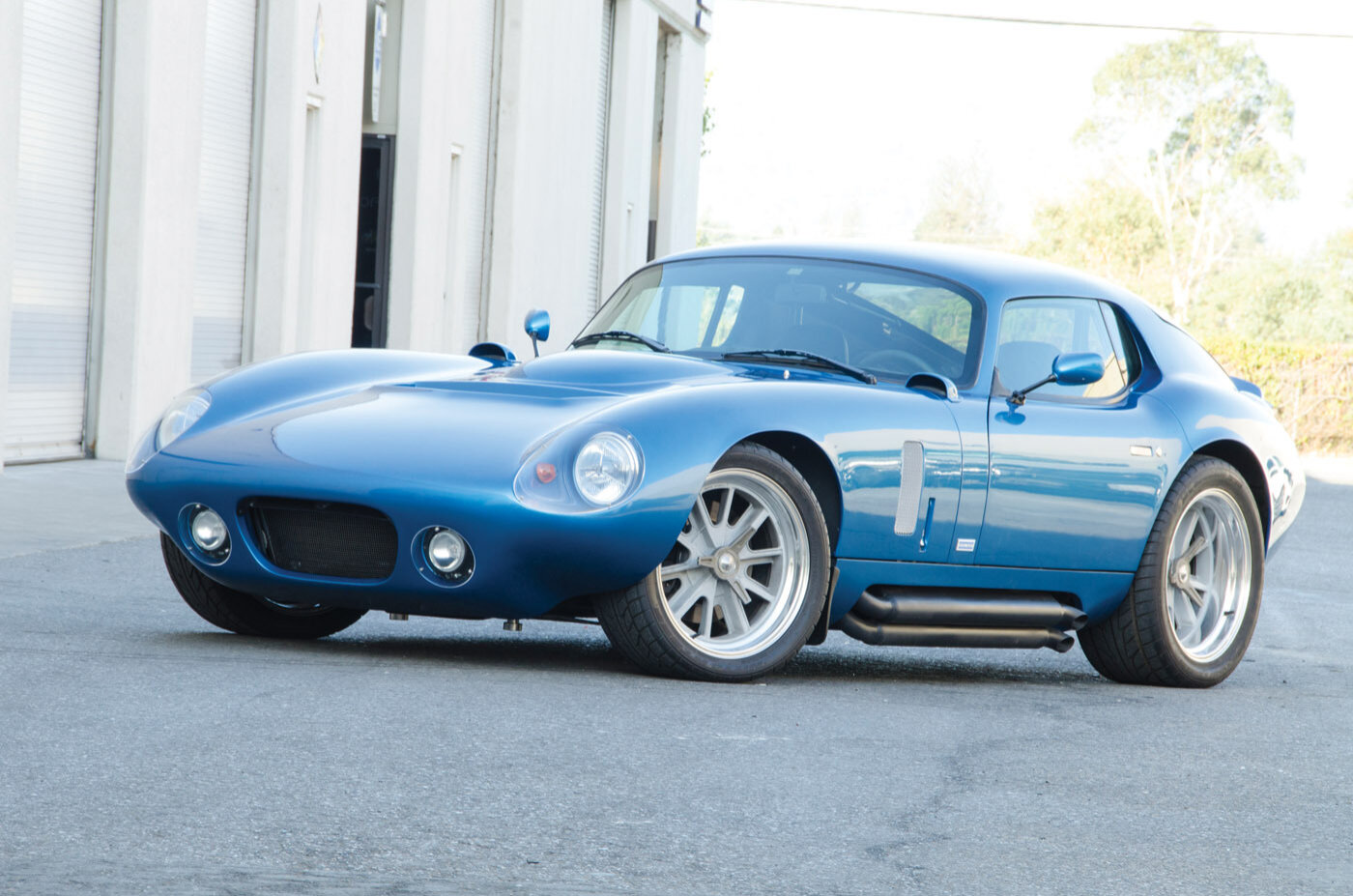
Shelby Daytona Coupe Refined by Peter Brock
Story and Photos by Steve Temple
While Guardsman Blue looks original on the Cobra Daytona Coupe shown here, the Wimbledon White stripes are conspicuously absent. That’s because the owner wanted to show off the special shape of the Coupe, with no distractions caused by graphics.
It’s a still a Shelby, though, built as a new car with a CSX9000 chassis number, 9128 to be exact. It’s closely patterned after CSX2287, a coupe from the 1960s that broke nearly two dozen speed records, among many other competition achievements. It also became famous for its infamous owner, rock ’n’ roll producer Phil Spector, who routinely exceeded speed limits on the streets of Los Angeles, provoking the ire of the LAPD.
The combination of it being the first coupe built in the U.S., the first coupe to win a race, and the now-famous Daytona pit fire, has established CSX2287 as arguably the most valuable of the six built. The fact that it was hidden away for 30-odd years by a mentally ill woman who was described as a “kook” by Carroll Shelby only added to the car’s mystique.
But that’s a long story for another day. So we’ll relate a bit of earlier history about Cobra Daytona Coupes in general, and then we’ll dig into the details of this latter-day continuation.
As most Cobra enthusiasts well know, the original Cobra roadster’s chassis was an outdated English import called the AC Ace that came to America for a new life. Carroll Shelby’s enduring vision was to implant a red-blooded American V8, replacing the tired and obsolescent Bristol and Ford Zephyr inline-sixes.
As the slab-side street version evolved into the muscular 289 Cobra FIA version, there was one complication for competition — airflow. Never one to mince words, Shelby once quipped that it had the aerodynamics of a shoebox. That was a serious problem, because even though the world of 1960s road racing was vast, the main event was Le Mans. The back section of this road course, called the Mulsanne Straight, was over 4 miles long, but the chunky little FIA Cobra was aero-limited to 160 mph.
So regardless of how well the little Cobra carved through the curves in the hands of many skilled drivers — like Ken Miles, Allen Grant, Dan Gurney, Bob Bondurant, Phil Hill and others — during the endurance race of 24 hours, it could not make up enough time in the corners to keep up with the svelte aerodynamic coupes on the straights. Ferrari, Alfa, Aston Martin, Jaguar and others had enclosed cars with swift fastback designs, so with less horsepower they achieved higher speeds, as you get “free horsepower” from sleeker, encapsulated aerodynamics.
Enter a 23-year-old with a pencil, a roll of butcher paper, and an idea, Peter Brock. He was self-educated in the intricacies of airflow dynamics from reading recovered WWII documents. He couldn’t quite read the foreign language at the time, but the numbers, lines and curves spoke volumes to him. With this new knowledge, he drew out on the floor in chalk the idea for the Cobra GT Coupe. So-called “corporate aero experts” at the time told him it would fail, but Peter persisted, and his team built a prototype in just 90 days.
Chassis No. CSX2287 went on to shatter record after record, cresting speeds almost 30 percent higher while using less fuel. With its five “brothers in arms” and their newfound horsepower acquired through aerodynamics, the now-named “Daytona Coupe” captured the world FIA Championship and GT Class at Le Mans in 1965. Yankee ingenuity had triumphed, capturing the final points on July 4, 1965, with Bob Bondurant at the wheel in CSX2601 beating out Ferrari at Rheims, France. (Or, to politely paraphrase Carroll’s famous quote, Ferrari’s hind end was now his.)
Now 50-plus years later, a more street-freindly version of this legendary race car is available from Shelby and even further refined by Panavia. This firm, whose name means “Traveling the World by the Air,” was founded by Steve Wood in Campbell, California, and specializes in the design, engineering and building of a wide range of enthusiast cars. These include Cobras, (both roadsters and coupes), GT40s, Mustangs, Tigers, Vipers and Corvettes, plus special builds to suit their customer’s wishes. Steve and his talented team also implement high-performance modifications, including engine work and custom fabrication. A few of his cars have been featured on Jay Leno’s Garage. “We make the American Dream happen!” says Steve Wood.
Getting back to the CSX9000 Series Shelby Coupe, it has a number of subtle changes in the body shape. As such, it’s “The purest and farthest extension of the original form in every way possible,” Steve observes. That’s because Peter Brock himself made the clay moldings that shaped the updated bodywork on this sleek coupe. From its slightly longer 93-inch wheelbase, this shape was able to be refined to what Peter Brock wanted originally. As noted at the outset, the owner of this coupe took special pride in that point so he wanted absolutely no stripes to detract from the shape as intended, no confusion of line, no distraction—just pure aerodynamic form.
Looking back at the original Daytona Coupe, it was a multinational affair, with the chassis from England, and five of the six Coupes wore Italian aluminum skins with Ford engines and transmissions.
By way of comparison, the updated CSX9000 Series is also a multinational affair. If there’s one thing that Americans love to do, is make things bigger and better. (Kinda fits with Carroll’s roots in Texas.) Such is the case with the car featured here. The owner, who prefers to remain anonymous at this juncture, had one simple directive: “Go as far as you can go and keep it looking like a version of 1965.”
Thus every detail of the now Shelby/Brock CSX9000 Series Daytona Coupe has been modernized. Initially, the build was handled by another shop, but Panavia took it to the next level, building in extra reliability and performance.
Instead of the coupe’s original 289 V8, the engine is from Bill Denbeste of Shelby Engine Technologies, a 351 aluminum Windsor stroked to 427 cubes, extracting nearly 600 horses in the process, nearly double that of the original’s output. TWM Borla Weber-like throttle bodies actuated by a FAST electronic fuel injection system precisely meter fuel and are far more reliable than their 1960s fire-starting counterparts.
The transmission is equally modernized and upgraded with a TKO 600. It has an additional gear and almost twice the torque-carrying capacity of 1965 four-speed versions. Further enhancements come in the form of Panavia/Wilbers German coilover shocks with external reservoirs, providing handling and damping performance well past when older shocks would retire with overheated fluid.
Overheating and excess cabin heat are not uncommon issues with Cobras, so Panavia added a customized cooling and air-conditioning systems. For engine cooling, “We installed one of our dual-pass, dual-row Daytona radiators that we pioneered on the Goldsmith car that was on Leno’s show,” Wood notes.
Other upgrades include increasing the size of the oil cooler by 50 percent, and mounting it slightly higher for protection from road debris, along with installing revised ducting that’s less exposed as well. In addition, the fans have twin Spal 150-amp relays with thicker 10-gauge wire to avoid getting cooked in traffic. The high-output alternator also has thicker gauge wire. Lastly, since the Hella bulbs in the headlights have much more wattage, Panavia adds a harness from Painless Performance. Together, these setups create a more street-friendly configuration.
All told, this coupe is not only a snake of a different color, but one with extraordinary levels of improvement. Somewhere, Carroll should be nodding in approval. And Pete Brock already is.

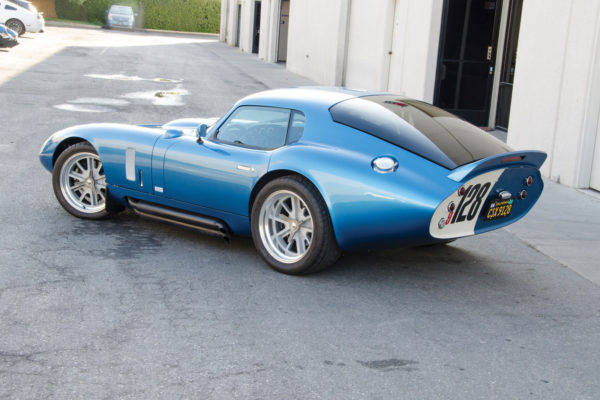
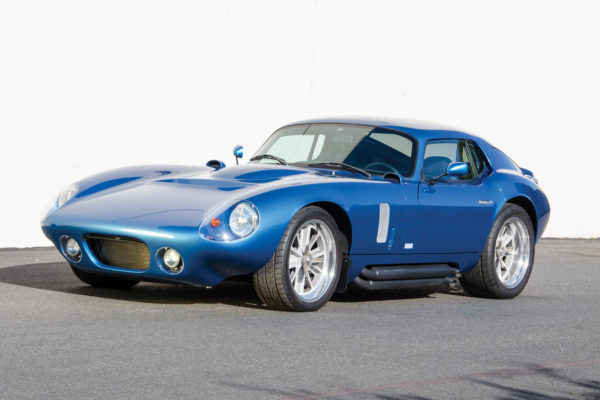
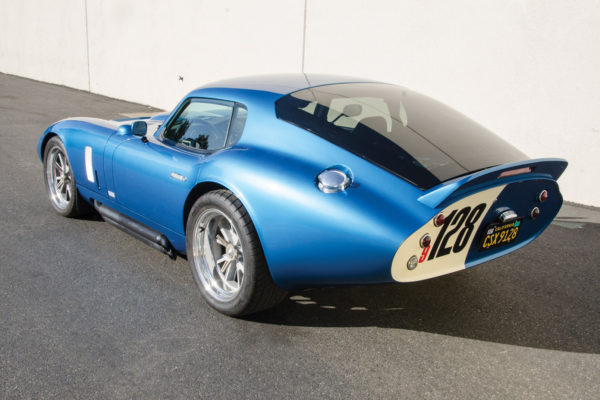
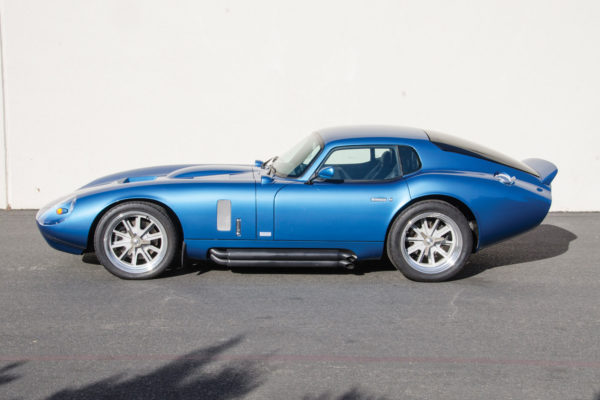
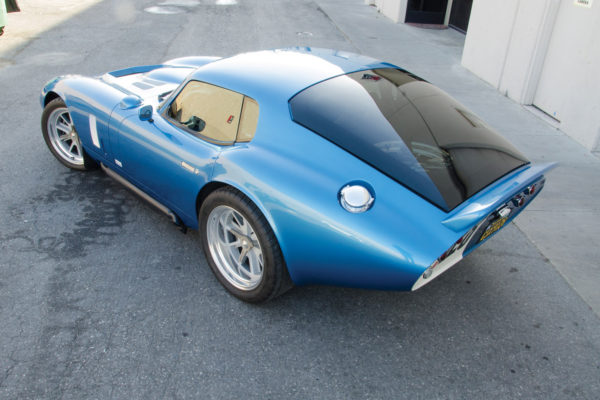
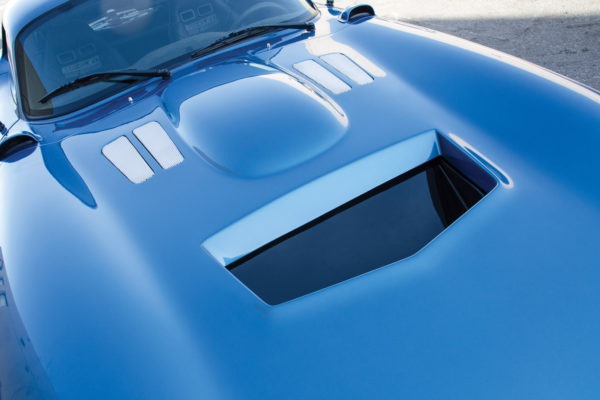
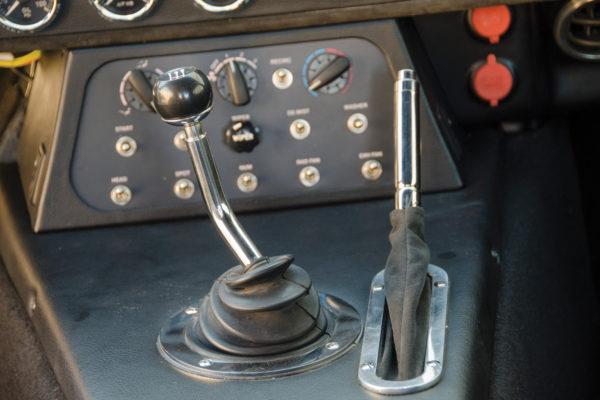
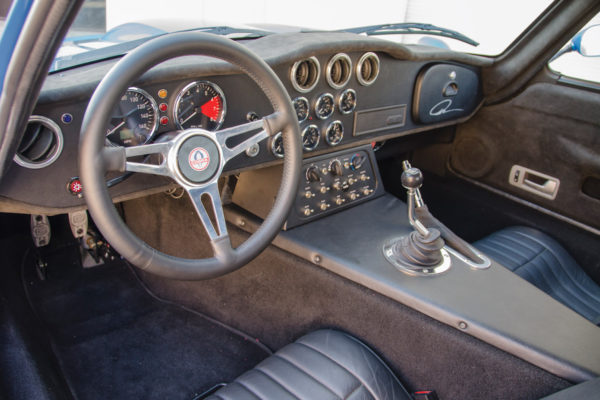
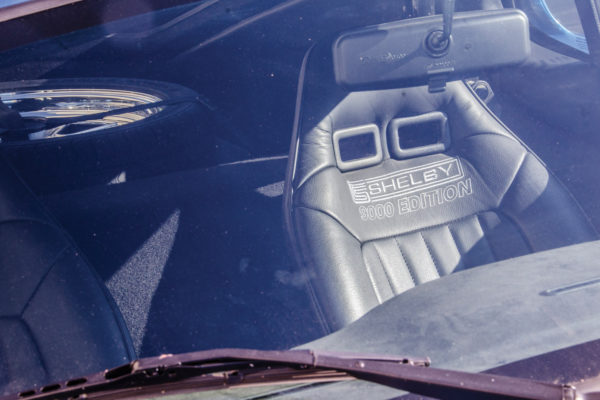
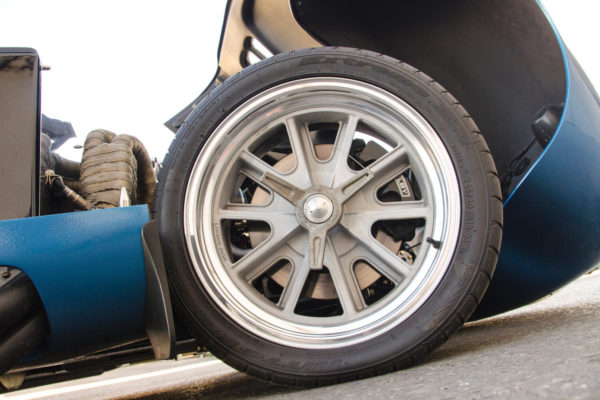
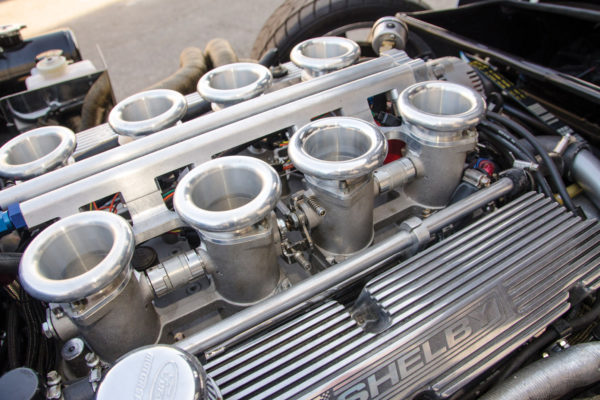
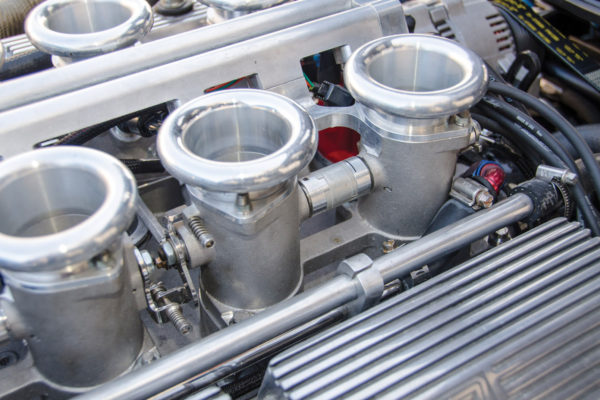
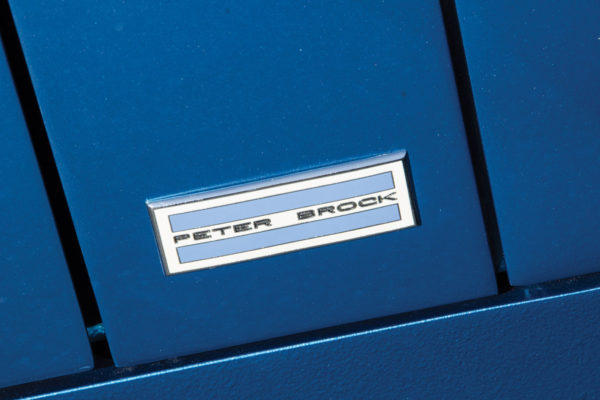
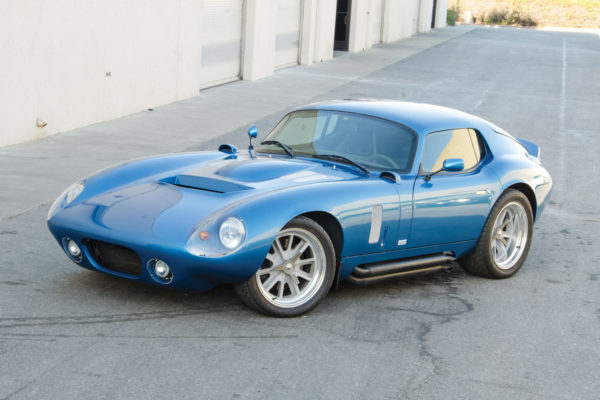
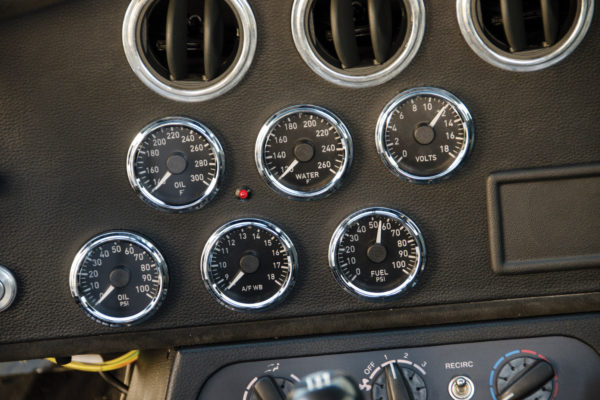
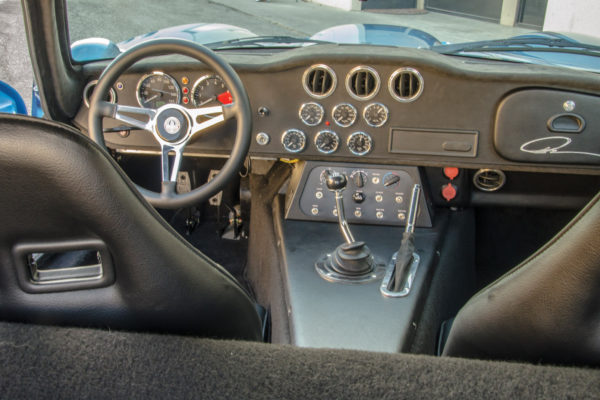
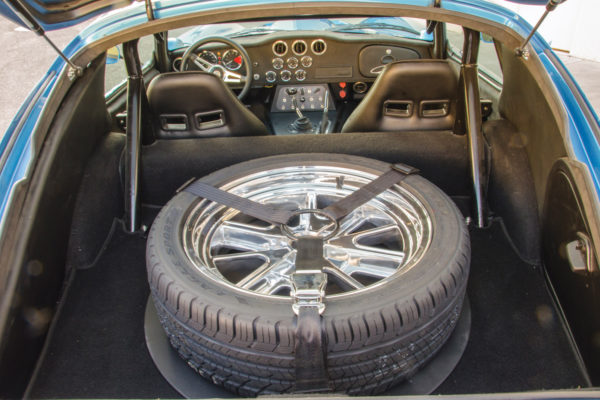
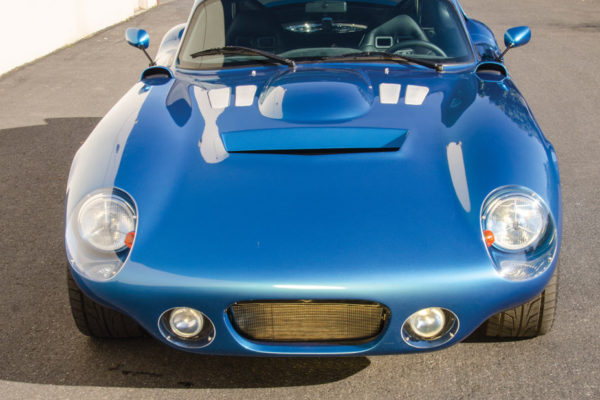
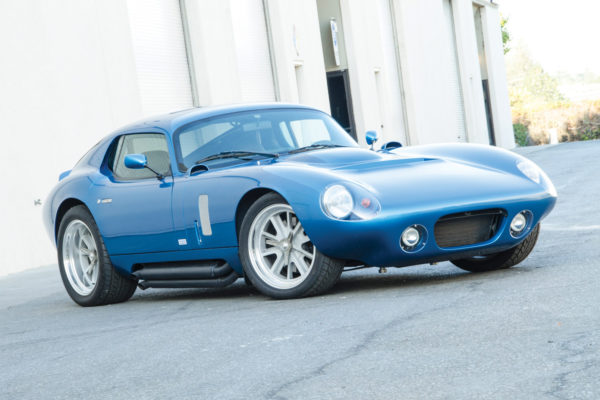
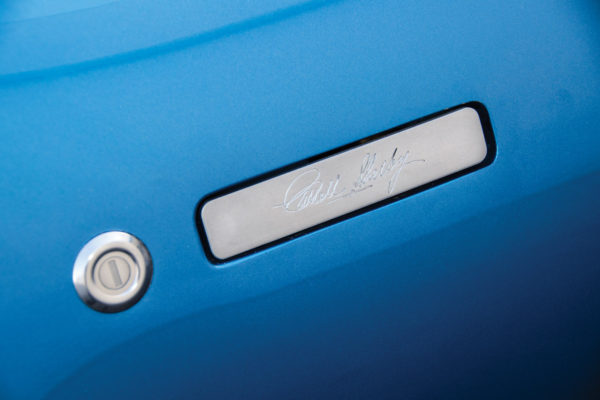
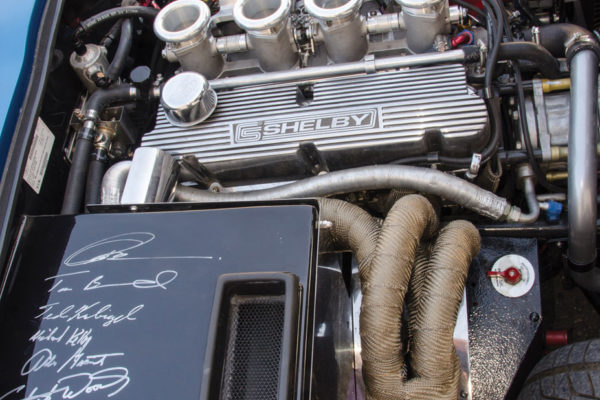
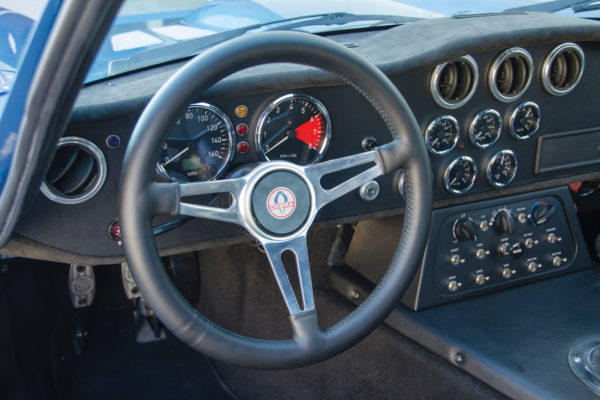
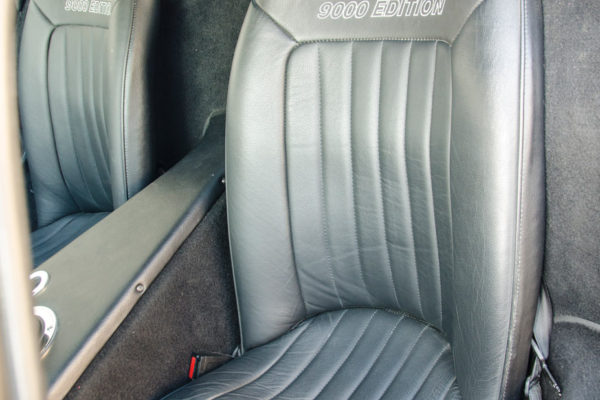
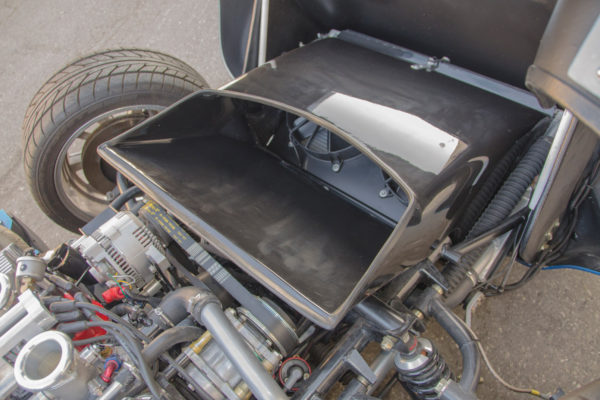
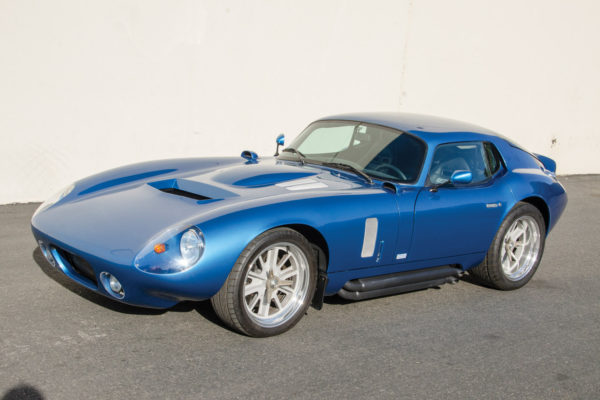
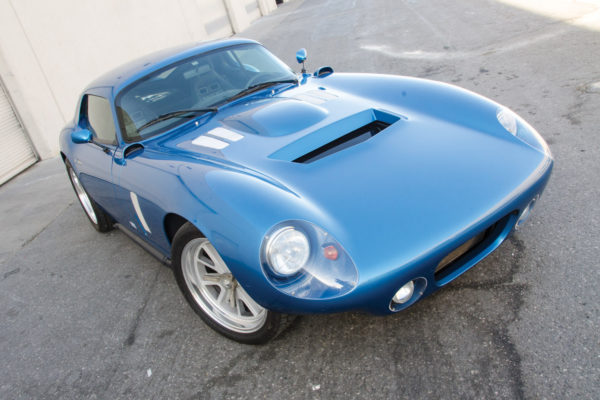
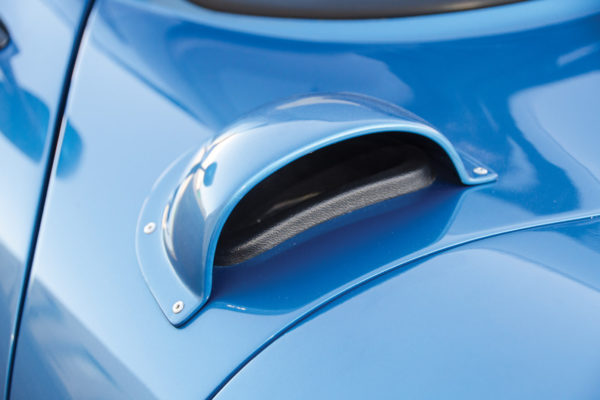
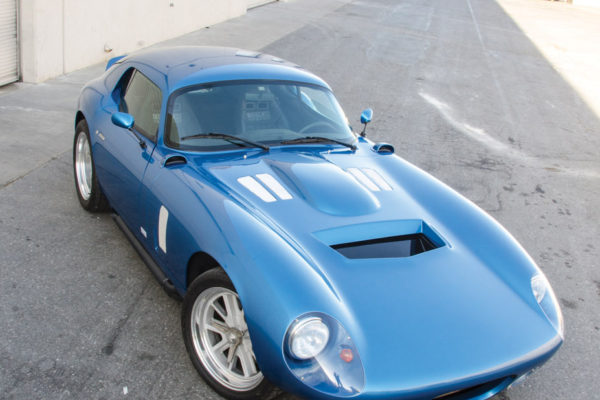
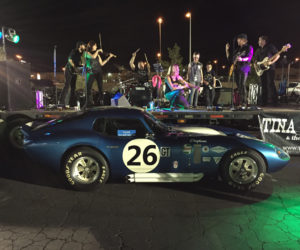
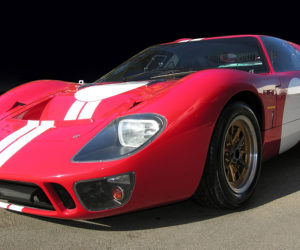
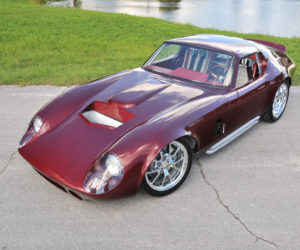
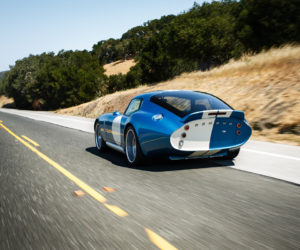
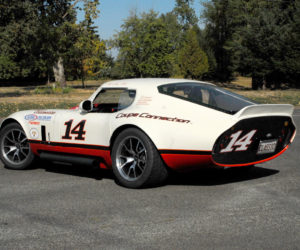
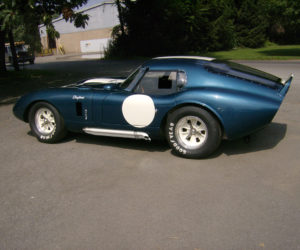




Comments for: True Blue
comments powered by Disqus